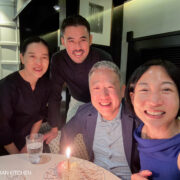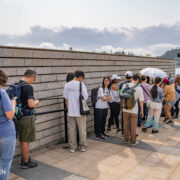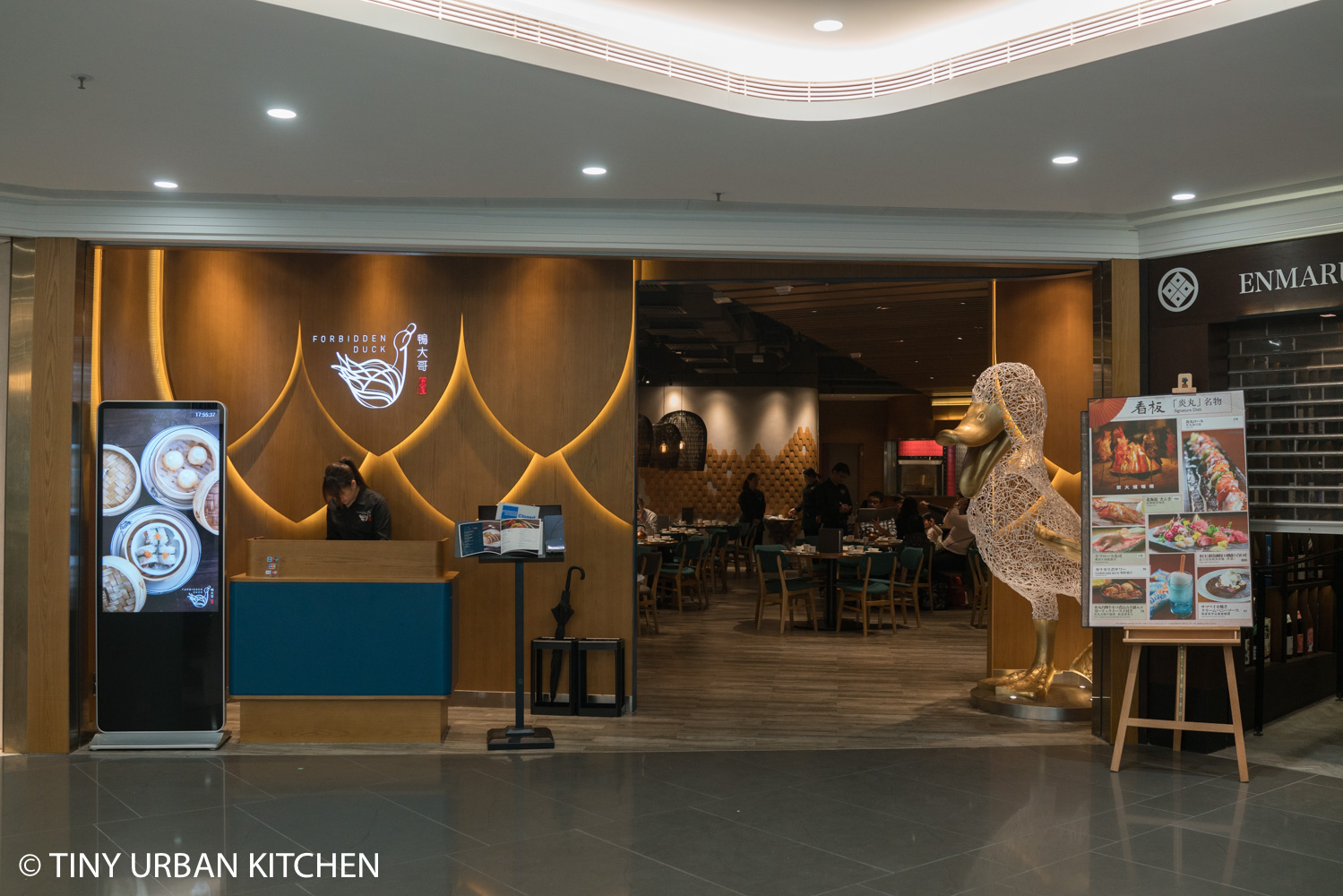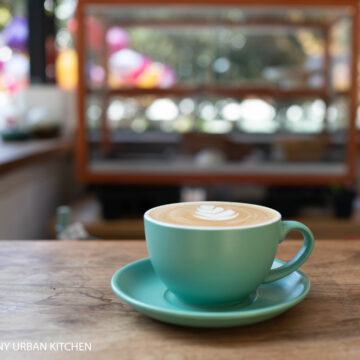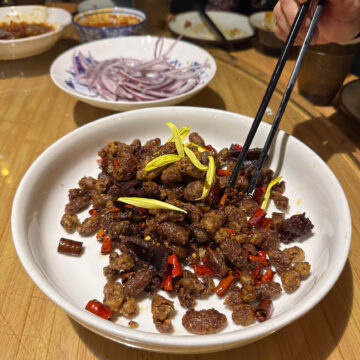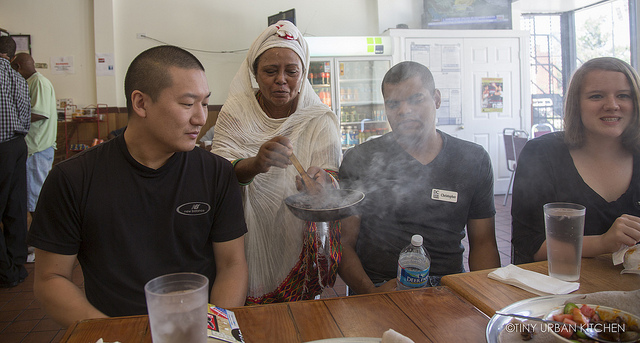
This is the third post in the new series about my recent trip to Washington DC right on Julia Child's 100th birthday (Series overview: Happy Birthday Julia Child): Other posts in this series include Wolfgang Puck's The Source and Ben's Chili Bowl - an Inside Perspective.
I love exploring ethnic enclaves, especially of cultures that are really foreign to me.
That's why I was especially excited about a walking food tour of DC's Little Ethiopia, an area along U Street to 9th Street that houses a large cluster of Ethiopian-owned businesses. According to our tour guide, Ethiopians like living near the region of power, which is typically the capital city. This is why the Ethiopians flocked to Washington D.C. when they emigrated here after the fall of Emperor Haile Selassie in their home country.
High rents in other areas forced them into the U Street area, at that time a dead, desolate block that soon became revitalized with Ethiopian shops, markets, and restaurants. Controversy between the African Americans (who see that area as their own) and the Ethiopians (who revitalized the area) has prevented the area from officially being recognized as Little Ethiopia.
Nevertheless, the culture is clearly present in this little corner. I took a fascinating (and tasty!) tour of this area where we sampled Ethiopian breads and spices; experienced a traditional Ethiopian coffee ceremony, and watched the hand-laborious production of injera (Ethiopian sponge bread) from the largest producer in the area.
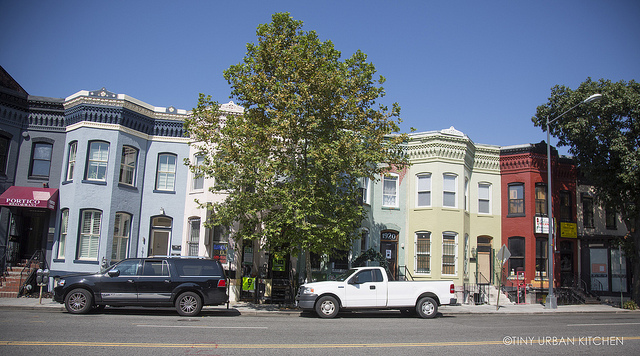
The neighborhood looks anything but desolate now, brimming with various Ethiopian businesses (you can even see a tiny yellow sign that says "Ethiopian Yellow Pages").
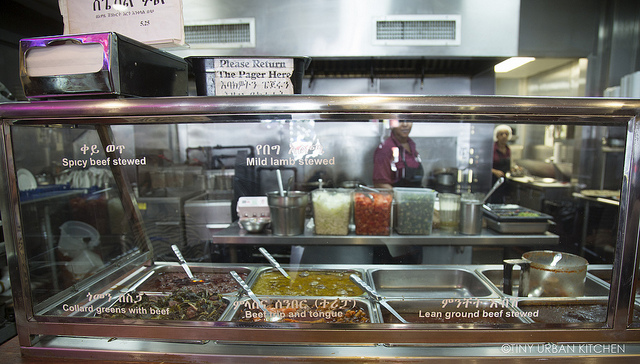
We started our tour by entering an Ethiopian market. This market sells all kinds of Ethiopian ingredients, such as spices, breads, coffee beans, and various canned goods. They have a whole cafe section where you can either get take-out or sit and eat a meal.

We all sat down and tried this cool segmented Ethiopian honey bread. It reminds me of a sweet, non-buttery version of monkey bread, but with many more segments! It was sweet and pretty tasty, reminding me just a bit of Hawaiian bread.
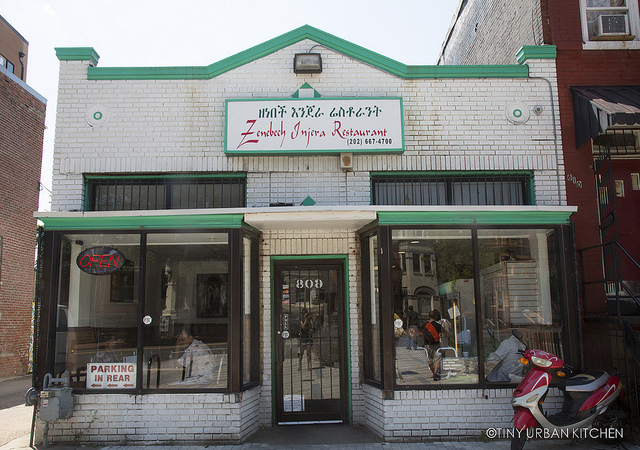
Next, we visited Zenebech Injera Restaurant.
First of all, what is injera?
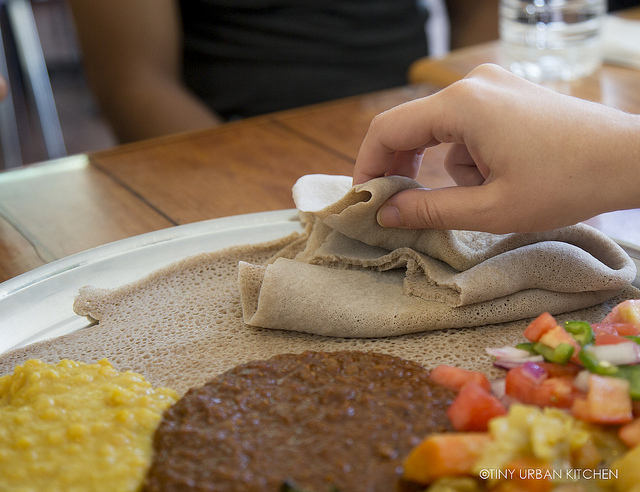
Injera is a yeast-risen Ethiopian crepe made from teff flour, an iron rich grain that grows in Ethiopia. Usually injera in the US is made with a mix of teff flour and regular flour, the more expensive (and more flavorful) versions having more of the imported teff.
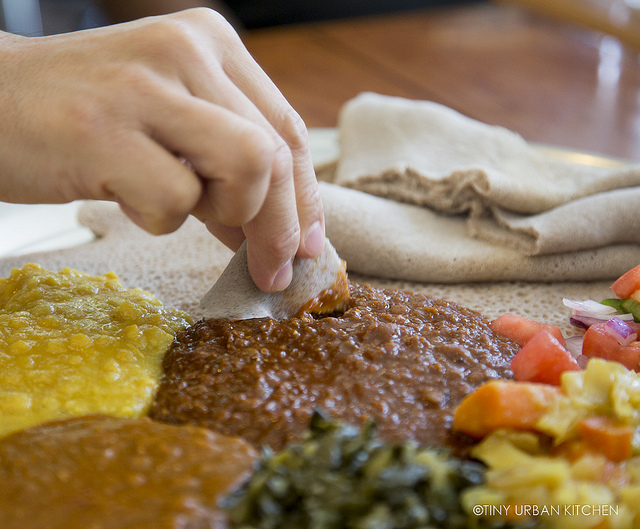
The spongy, slightly tart, absorbant bread is used to "pick up" various sauces, since Ethiopians eat with their hands without any utensils.
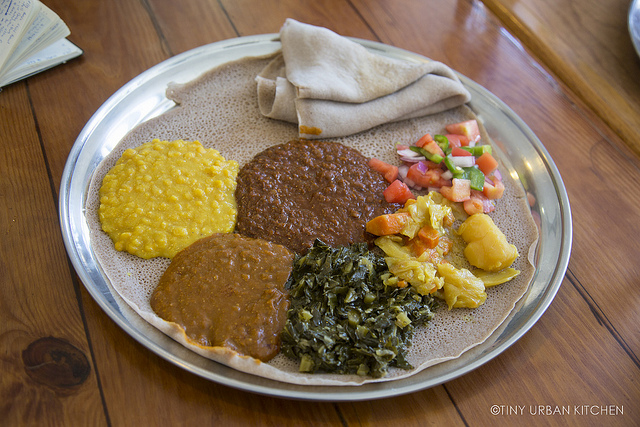
In traditional Ethiopian dining, dishes are brought out on a huge piece of injera and served on a traditional round straw table. Guests pick up pieces of bread and dip it into whichever dish they want.
The tan colored sauce is called berbere, and is much like a curry powder, comprising spices such as cardamom and cumin. The dark reddish brown sauce is called mitmita, and consists of African birds eye chili peppers, cardamon seed, cloves, and salt. The light yellow sauce is called shiro and is made from ground yellow split peas. The green vegetables are stewed collard greens and the fresh "salsa" consists of tomatoes, onions, and green peppers.
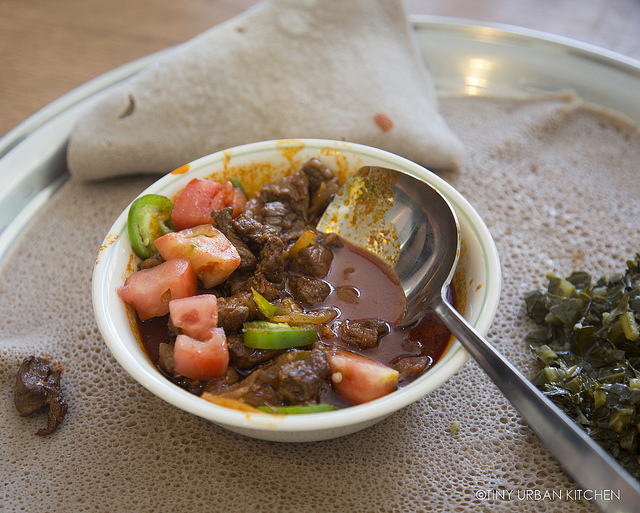
We also tried lamb wat, a curry stew made with meat, vegetables (in this case tomatoes and jalapenos), berbere spice, and kibbeh, a clarified butter infused with garlic and other spices.
The flavors of all these different sauces were fantastic. Deep, rich, earthy, and full of flavor, one diner even commented that if he were a vegetarian, he could eat Ethiopian food and not miss the meat at all. The one lamb dish was excellent, infused with the deep, rich flavors from the flavorful bebere.
Sneak Peek Into the Kitchen . . .
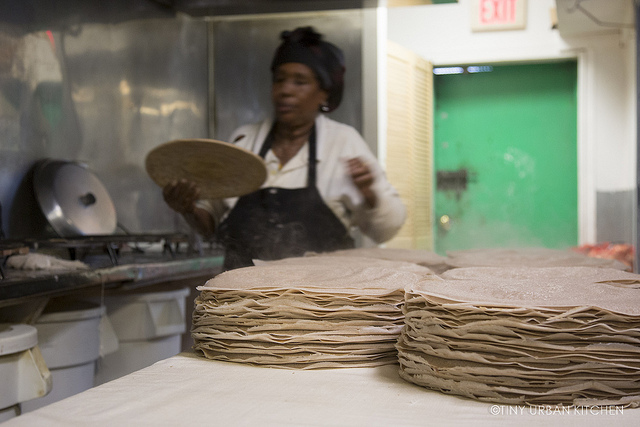
After enjoying the lovely tasting of Ethiopian flavors, we had a really unique opportunity to step inside the kitchen. It is incredible to think that this is where a majority of all the injera in DC is made.
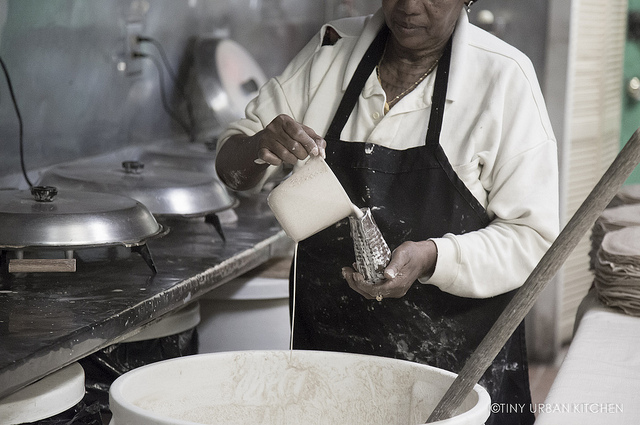
The woman making injeras is methodical and exact. First she measures our a specific amount of batter, which is housed in a HUGE human-sized plastic bucket.
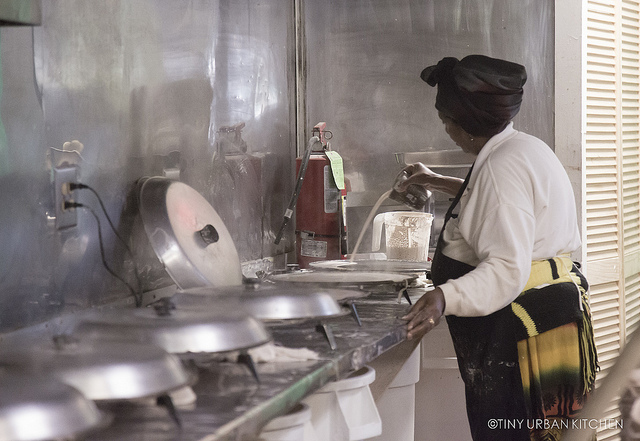
She pours the pre-measured amount onto an injera cooker (see how they have a whole row of these machines?).
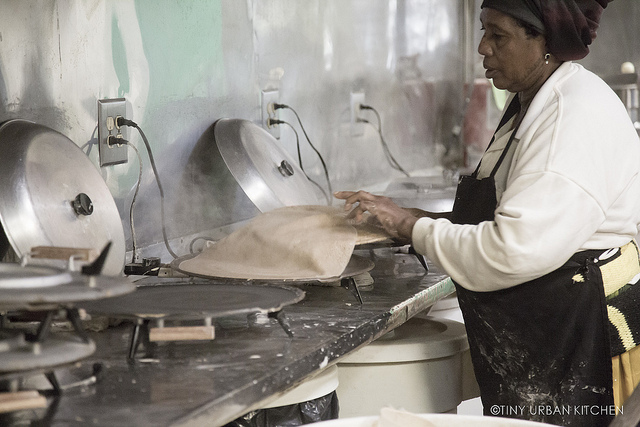
She covers that one, and then goes over to another one she has set up earlier and removes it. The timing to get this whole operation requires precision-like awareness of everything that's going on. She makes it look extremely easy, but I'm sure it's not.
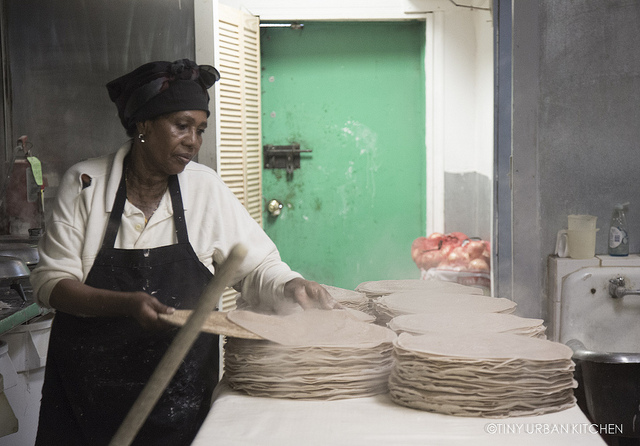
She can work straight for hours, churning out thousands of sheets of injera, which they sell to many, many local restaurants and stores.
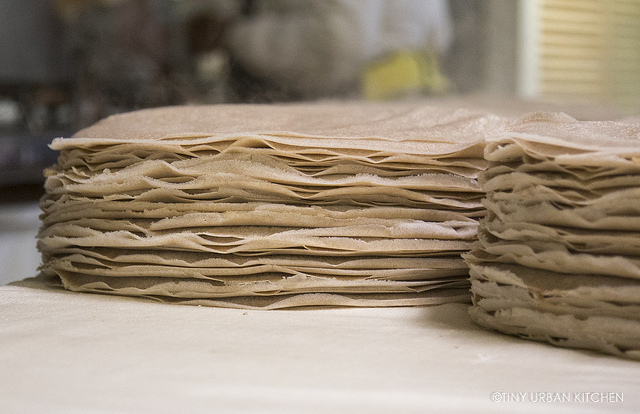
What a crazy stack of perfectly formed pancakes.
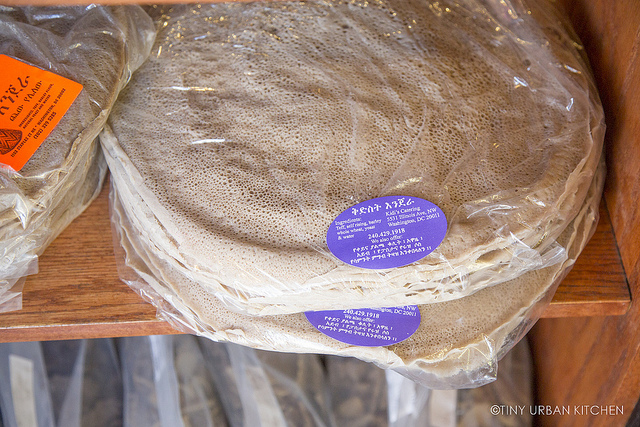
In the market, they are usually sold in bags like this.
Ethiopian Coffee Ceremony
Finally, we ended the visit with a traditional Ethiopian coffee ceremony. In Ethiopia, everyone roasts their coffee at home. I only saw green, unroasted beans in the market.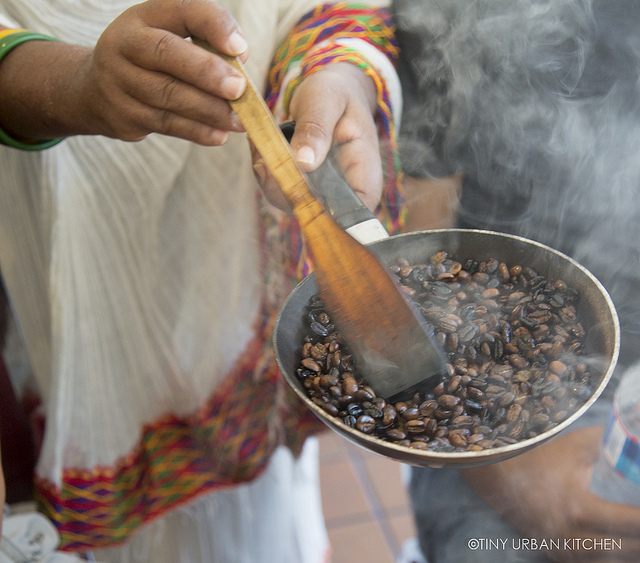
First, roast your beans right on the pan over a flame on the stove. It will create tons of smoke and smell really good.
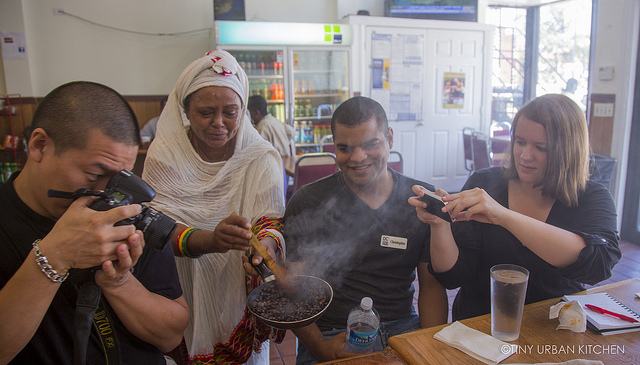
Bring out the pan while it is smoking and bless the guests with the aroma of the coffee.
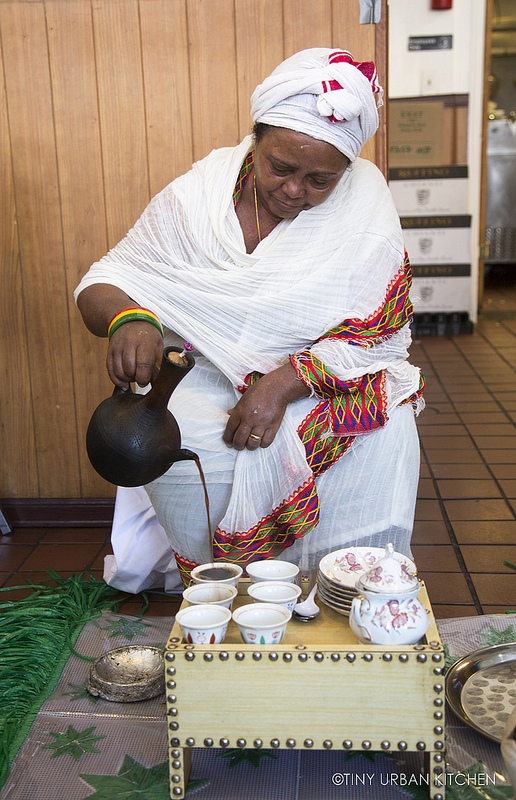
Traditionally, they would then grind up the beans manually using a mortar and pestle. These days, they will use the wonders of modern technology and grind the beans using an electric grinder.
Finally, steep, and pour.
The coffee is unfiltered, and thus is quite strong, thick, and slightly gritty at the bottom.
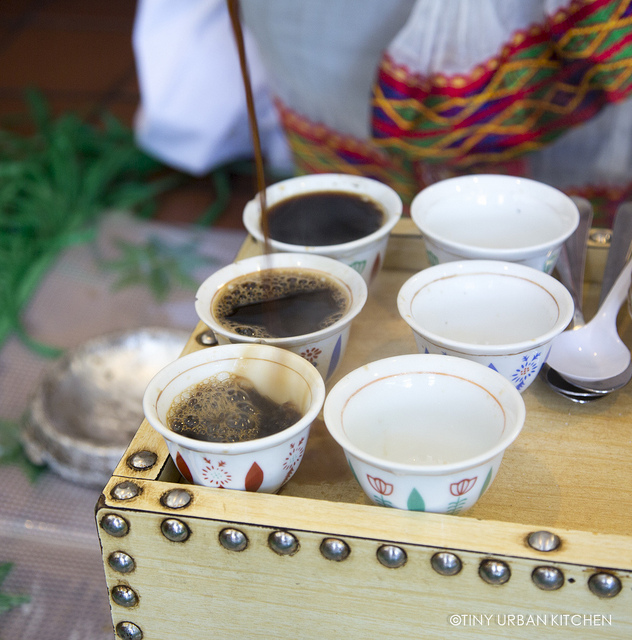
It's hard to beat freshly roasted coffee, and this coffee was deep, rich, and wonderfully fragrant. I didn't mind the little bits of grit at the bottom.
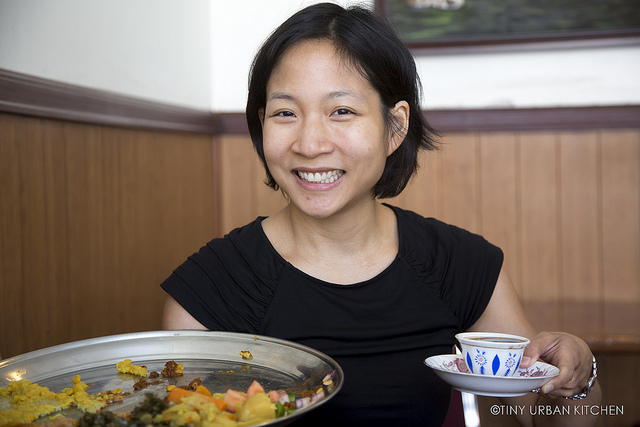
I had a great time on this tour. Our tour guide Chris was knowledgeable, friendly, and took good care of us. I especially enjoyed learning a mix of history, culture, and food. The places we visited were fantastic, and I look forward to going back to eat full meals at these places.
Disclaimer
This trip was part of a media tour of Washington DC paid for by Destination DC, a non-profit organization that supports the DC travel and tourism sector. The tour was provided by DC Food Tours.
All Rights Reserved





